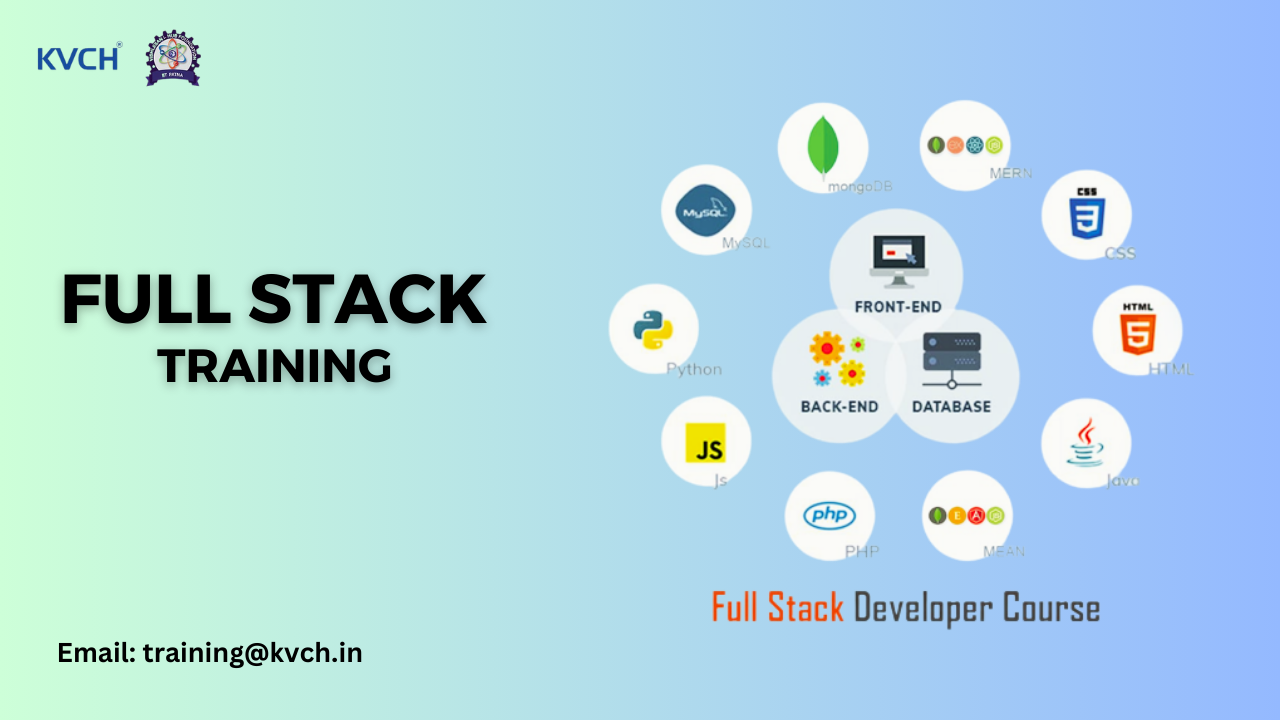In the ever-evolving landscape of web development, Full Stack Developers have emerged as the Swiss Army knives of the tech world. They possess a versatile skill set that spans both the front-end and back-end realms of web development, making them invaluable assets for businesses and a driving force behind the creation of dynamic and interactive web applications. This guide explores the role of Full Stack Developers, the skills they command, and why enrolling in a Full Stack Development course at an institute or taking a Full Stack Development online course is an astute career move.
Understanding Full Stack Development:
Before delving into the world of Full Stack Developers, it’s essential to understand the core concept of Full Stack Development. In web development, a “stack” refers to the set of technologies and tools used to create a web application. A Full Stack Developer is proficient in both the front-end and back-end technologies of this stack, making them capable of handling the entire web development process.
The Role of Full Stack Developers:
Full Stack Developers wear multiple hats throughout a project’s lifecycle. They are responsible for creating the user interface (front-end) and managing the server, database, and server-side application logic (back-end). Here are some key aspects of their role:
Front-End Development: Full Stack Developers work on the visual and interactive aspects of a website or application. This involves coding in HTML, CSS, and JavaScript to create responsive and user-friendly interfaces.
Back-End Development: On the back-end, Full Stack Developers handle server management, database operations, and the business logic that powers the application. They often work with server-side scripting languages like PHP, Python, Ruby, or Node.js.
Database Management: Full Stack Developers are skilled in database management systems like MySQL, PostgreSQL, MongoDB, and SQLite. They design and maintain databases, ensuring data integrity and security.
Server Management: Full Stack Developers deploy and manage web servers, handle hosting, and ensure the server’s performance and security. They may work with server technologies like Apache, Nginx, or IIS.
Application Logic: Full Stack Developers develop and implement the application’s business logic. This involves handling user authentication, data processing, and server-side functionalities.
Key Skills of Full Stack Developers:
To excel in this multifaceted role, Full Stack Developers need to possess a diverse set of skills, including:
Front-End Technologies: Proficiency in HTML, CSS, JavaScript, and front-end frameworks like React, Angular, or Vue.js.
Back-End Technologies: Knowledge of server-side scripting languages, databases, and server technologies.
Version Control: Skills in using version control systems like Git for collaboration and code management.
Web Security: Understanding of web security best practices to protect applications from common threats like SQL injection and cross-site scripting (XSS).
API Integration: Ability to integrate third-party APIs and services into web applications.
Problem-Solving: Strong problem-solving and debugging skills to identify and resolve issues efficiently.
Testing and Quality Assurance: Implementing testing procedures and quality assurance to ensure the reliability and performance of web applications.
Soft Skills: Effective communication, project management, and the ability to work in cross-functional teams.
Why Enroll in a Full Stack Developer Course:
Enrolling in a Full Stack Developer course at an institute or taking a Full Stack Development online course offers several advantages:
Comprehensive Learning: Full Stack Developer courses provide a structured curriculum that covers all aspects of web development, from front-end to back-end technologies.
Expert Guidance: Instructors with industry experience offer guidance, insights, and best practices that help you grasp complex concepts.
Hands-On Experience: Practical exercises and projects allow you to apply what you learn, honing your skills in a real-world context.
Certification: Completing a Full Stack Developer course often results in a recognized certification, which can boost your credentials and employability.
Networking: Courses often provide opportunities to connect with peers and instructors, expanding your professional network.
Access to Resources: Institutes and online courses usually provide access to libraries, tools, and resources that facilitate learning.
Choosing the Right Full Stack Developer Course:
When selecting a Full Stack Developer course, consider the following factors:
Curriculum: Ensure the course covers a comprehensive range of technologies and includes both front-end and back-end development.
Instructor Expertise: Research the qualifications and experience of the instructors.
Flexibility: If you opt for an online course, check for flexibility in terms of scheduling and pacing.
Reputation: Look for reviews and testimonials to gauge the course’s quality and reputation.
Certification: Verify whether the course offers a recognized certification upon completion.
The Future of Full Stack Development:
Full Stack Developers are poised for a bright future as the demand for professionals who can handle end-to-end web development continues to grow. Businesses appreciate their ability to streamline development processes, reduce costs, and create seamless user experiences. By enrolling in a Full Stack Developer course, you can position yourself at the forefront of this trend, equipped with the skills and knowledge needed to thrive in the dynamic field of Full Stack Development.
In conclusion,
Full Stack Developers are the architects of the digital world, creating web applications that shape our online experiences. Their diverse skill set and ability to bridge the gap between front-end and back-end development make them invaluable in today’s tech-driven landscape. Whether you choose an institute-based course or a Full Stack Development online course, your journey to becoming a Full Stack Developer promises a future filled with exciting opportunities and a pivotal role in shaping the digital landscape.






